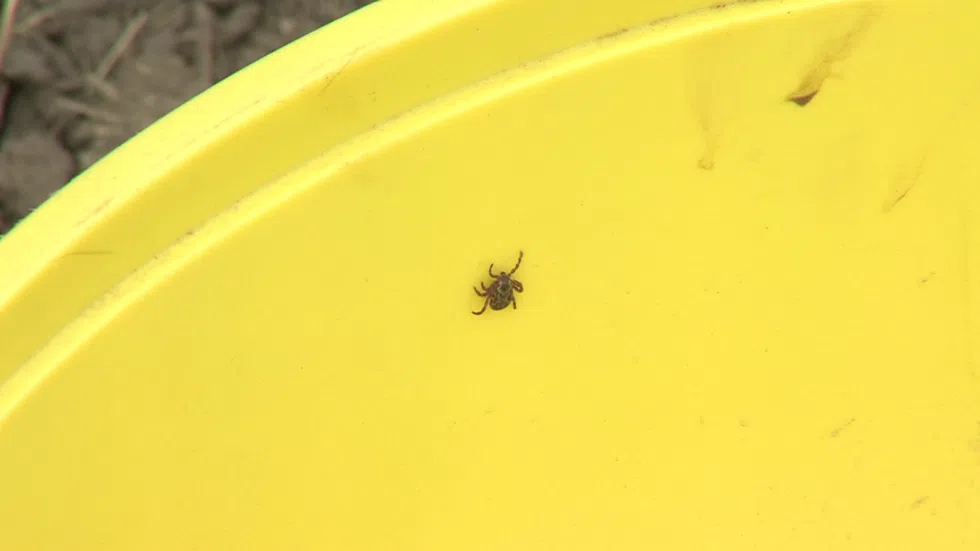
Tick season is underway, residents reminded to be aware
MEDICINE HAT, AB — A Medicine Hat man is reminding residents to be aware of ticks after removing one found on his girlfriend in the city last week.
Gavin Coburn and his girlfriend Melissa Lemire were out using a fire pit at Kin Coulee Park last Friday. When they got home, Gavin spotted a tick on Lemire’s leg
“She didn’t believe me at first, because I usually joke around with her, but I said ‘No, you have a tick, and it’s feeding on your leg,’” he said.
